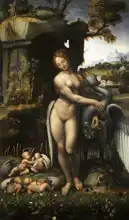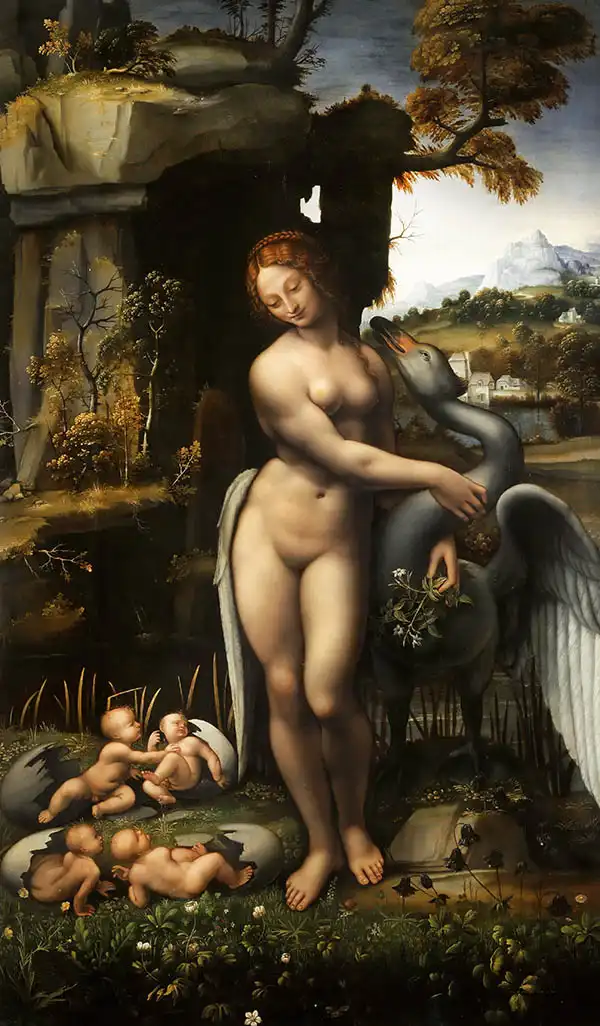About this finishing
Print. The image is printed on the top quality 10-ink HP Z9PS printer on HP matte 270 g / m2 paper. You can choose any size to an accuracy of 1 cm. A margin of 5 cm around the image is added to the size of the motif.


You can find a detailed description about our finishings
here.
Leda and the swan
Date:
1510Medium:
oil on boardLocation:
Galleria degli Uffizi, Florence, ItalyDimensions:
77.5 x 130 Leonardo da Vinci's "Leda and the Swan" is a renowned painting that depicts the
mythological tale of Leda, the Queen of Sparta, and the god Zeus, who transformed into a swan. The scene captures a moment of divine seduction as Zeus approaches Leda with a swan's graceful form.
In the painting, Leda is positioned elegantly, embodying a sense of vulnerability and astonishment as she gazes at the swan. The composition is characterized by a subtle intertwining of human and avian forms, with Leda's figure gracefully interacting with the swan's neck. The swan's wings are outstretched, conveying a sense of movement and intimacy.
Leonardo's mastery is evident in the meticulous attention to detail, from the delicate rendering of feathers to the play of light and shadow on the figures. The background features a landscape bathed in soft hues, contributing to the overall dreamlike atmosphere of the painting.
"Leda and the Swan" is a timeless work that continues to captivate viewers with its mythological narrative, exquisite craftsmanship, and the enigmatic beauty characteristic of Leonardo da Vinci's art.
Vinci painted picture Leda and the swan in 1510. Prevailing color of this fine art print is brown and its shape is portrait. Original size is 77.5 x 130. This art piece is located in Galleria degli Uffizi, Florence, Italy. This image is printed on demand - you can choose material, size and finishing.
Leonardo da Vinci (1452-1519). He was an important Italian
Renaissance painter, sculptor, architect, musician, mathematician and inventor. He is even considered the greatest humanist of all time. His works are special and innovative thanks to the search of compositional balance, the movement of characters and perspectives achieved by the play of light and colour. He used a distinctive colour blending technique known as sfumato. His attempt to capture the character, mood and expression of people was also significant. Among his most famous works are
The Last Supper, Lady with an Ermine, Self Portrait and of course
Mona Lisa, which is one of the most famous works of art in the history of painting.


